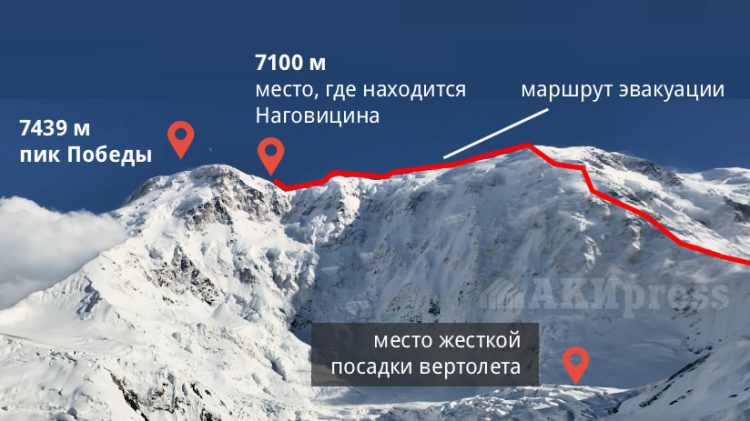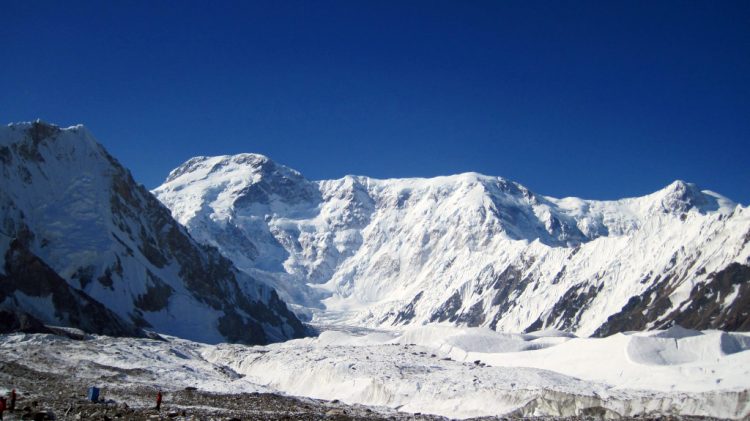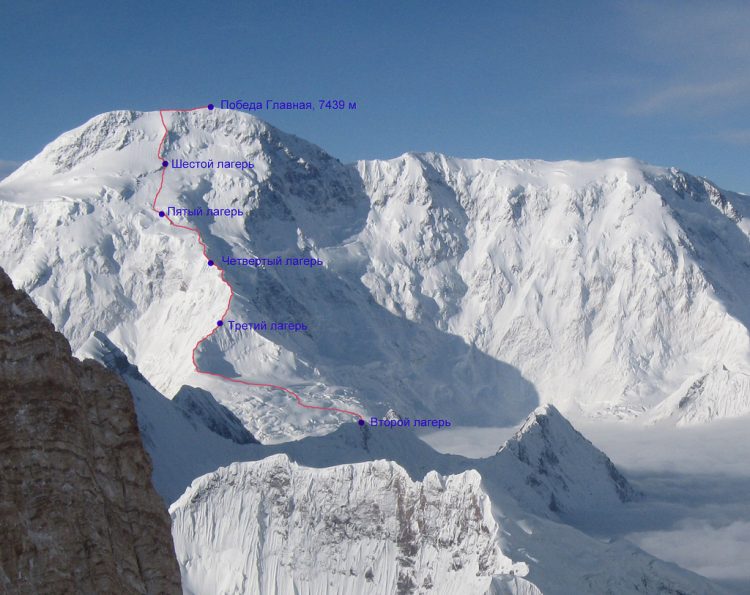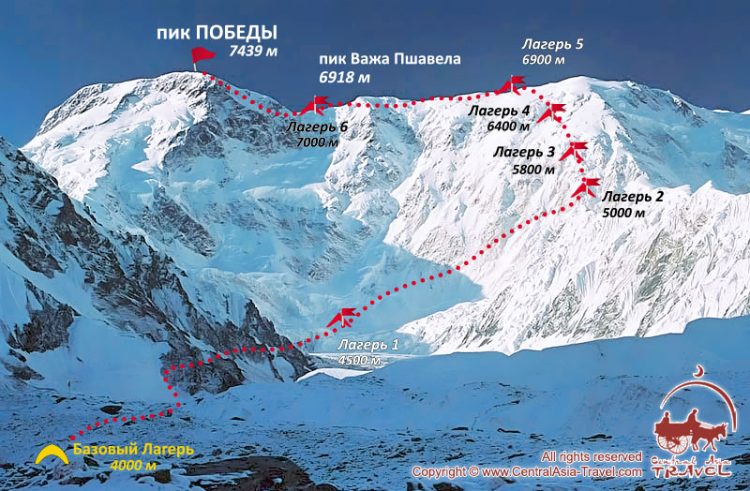On August 12, 2025, climber Natalia Nagovitsina fell while descending from a steep pre-summit ridge and broke her leg near the summit of Pobeda Peak. This incident led to a large-scale rescue operation in Kyrgyzstan, human casualties and worldwide attention on the Internet and in the media.
All available information about this tragedy is collected in this video release:

Footage from the site of the Mi-8 helicopter crash near Pobeda Peak during an attempt to evacuate Natalia Nagovitsyna from the mountain

On August 16, a helicopter belonging to the Ministry of Defense of Kyrgyzstan was flying to the South Enilchek Glacier after receiving a distress signal from climbers who were injured while climbing Pobedy Peak. On board were crew members and mountain rescuers involved in the rescue operation.
The landing took place in conditions of high altitude and difficult weather conditions. However, at an altitude of 4,600 m under the Wild Pass, the helicopter made a hard landing. All passengers and crew survived, but several people received injuries of varying severity that did not pose a threat to life. A second helicopter arrived at the scene to evacuate the injured rescuers and evacuated people.
Pobeda Peak (7439 m) is the world’s northernmost seven-thousander, located at the junction of the highest ridges of the Tien Shan: the Meridional and Kokshaal-Tau. The Meridional ridge in the south abuts the ice wall of Kokshaal-Tau. At the junction, the height of the ridge is 7003 m. This is the eastern summit of Pobeda Peak. From there the ridge goes west, at first slightly descending, then approaches a rise, called by climbers the peak of Soviet Armenia, and after a short descent comes to the ascent to the main summit of Pobeda Peak, which is a ridge, rocky in the east and icy in the west, about 1500 m long. Further to the west the ridge descends in three rather steep ledges to a height of 6900 m and continues to a new slight increase, which is the final section of the 10-kilometer massif of Pobeda Peak. Also, Pobeda Peak is the highest peak of the Tien Shan.
The appearance of the Russian name Pobeda Peak on the maps is due to a mistake by P.P. Semenov-Tyan-Shansky, who in 1857 gave the name Khan-Tengri to another outstanding peak, known among the local population as Kan-Too peak (6995 m).

Pobeda Peak occupies a special place in the history of Soviet mountaineering. It is called the most inaccessible, the most formidable seven-thousander – this summit places very high demands on the physical and moral preparation of climbers. The weather here is changeable and treacherous: now the hot sun is warming, and in a few minutes it is already snowing.


Drone footage of Nagovitsyna’s body lying in a torn tent:
Material prepared by: alp.org.ua

